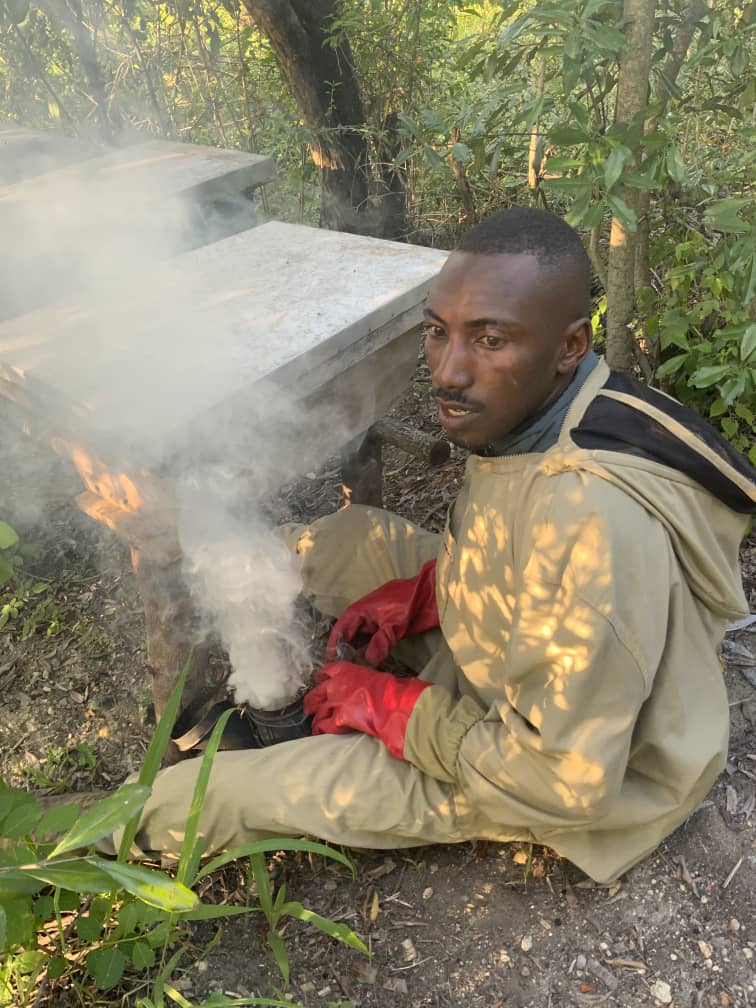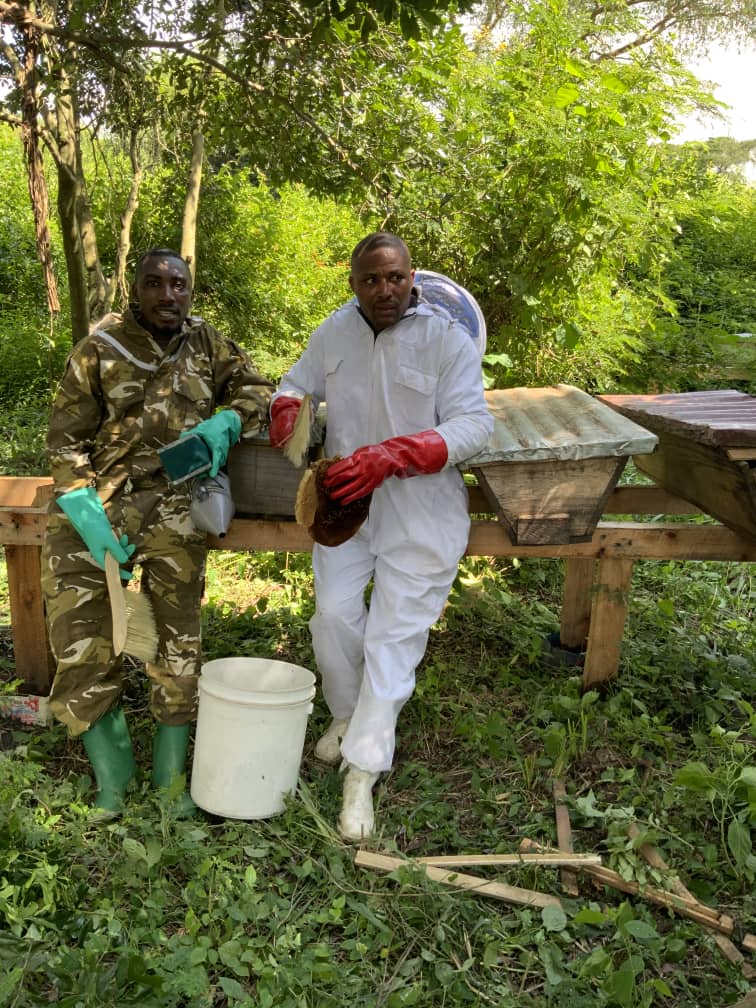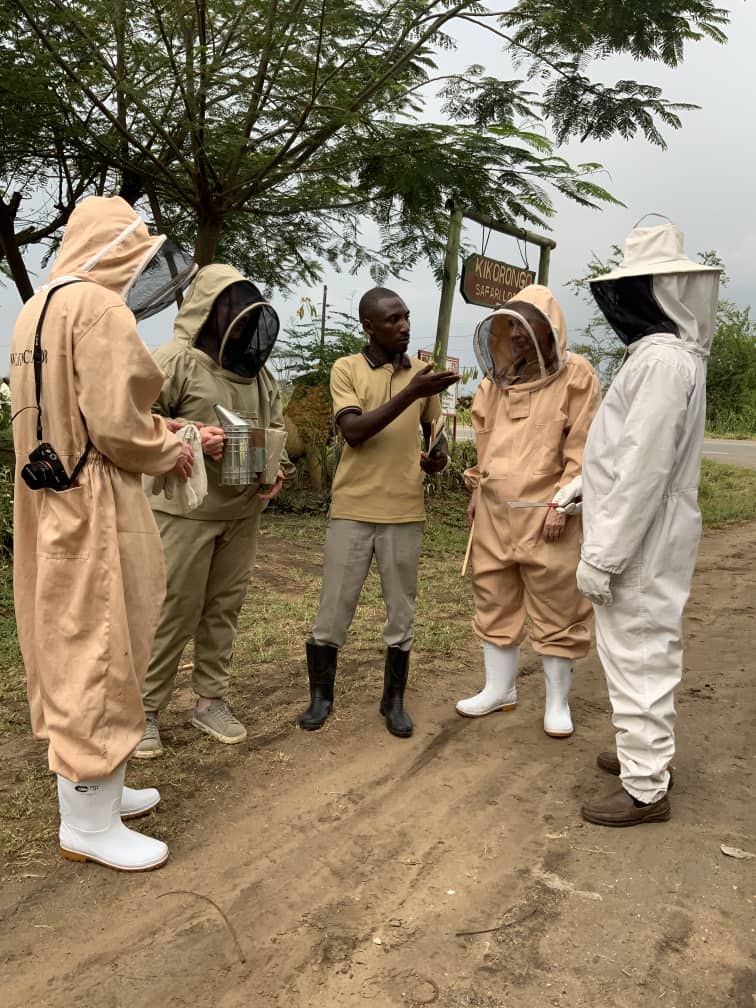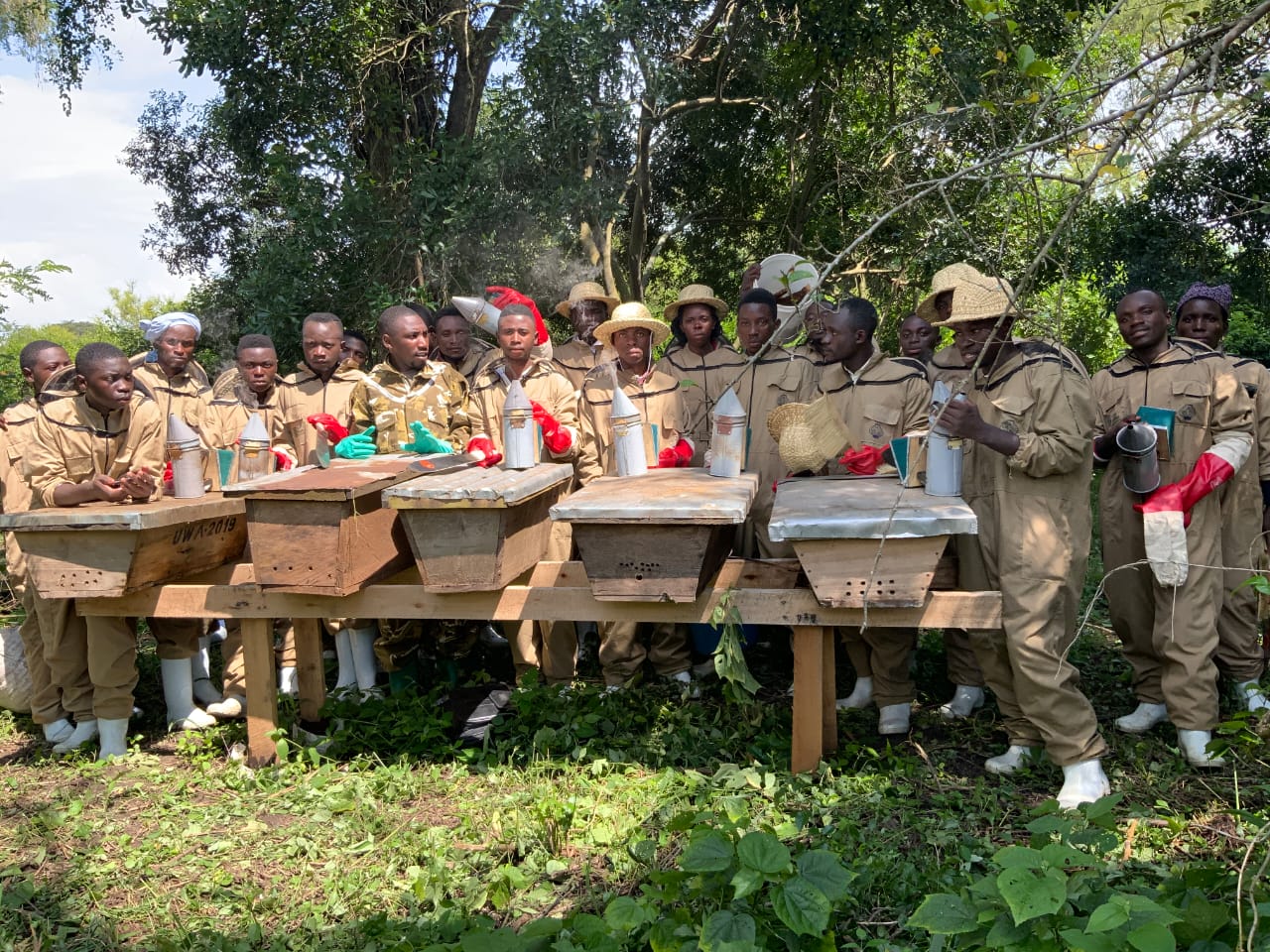From Poaching to Conservation: Cris Kaseke’s Transformation at Queen Elizabeth
From Poaching to Conservation: Cris Kaseke’s Transformation at Queen Elizabeth

Today, his story is one of hope, change, and community transformation—from illegal fishing to leading efforts to reduce human-wildlife conflict while creating opportunities for his community.
Born to a single mother, Kaseke grew up in the fishing villages within QENP.
His family moved frequently, following the best fishing seasons.
Kaseke’s mother worked tirelessly as a fishmonger and salt miner at Bunyampaka Crater Salt Lake to provide for him and his siblings.

From a young age, Kaseke joined her efforts, taking on risky fishing trips in small canoes, constantly exposed to the dangers of crocodiles, hippos, and drowning.
“I started fishing as a boy to help my mother pay for school fees for me and my brothers. But it was tough. The dangers of fishing and the unpredictable catch made life very hard,” Kaseke shares.
Help came through a Geneva-based tourist, Madam Keiser, who supported vulnerable children in the area through her organization, Association Keiser Initiative for Uganda.
With her help, Cris earned a Certificate in Wildlife and Natural Resources Management. Later, he secured a government scholarship and completed a diploma in the same field at the Uganda Wildlife Research and Training Institute.
“At the institute, I performed well in Community Conservation and Vertebrate Biology. These became my passion and the foundation of what I do now,” he says.
While studying, Kaseke learned about using beekeeping to reduce human-wildlife conflict.
Bees naturally deter elephants, as they can sense their presence through sensitive nerves in their trunks and avoid areas with hives.
Inspired by this idea, Kaseke and his community founded the Lake Katwe Sub County United Beekeepers Association (LAKASUBA) in 2015.

The group signed an agreement with the Uganda Wildlife Authority (UWA) in 2016 to collaborate on conservation efforts.
UWA provided 15 beehives, protective suits, and honey containers to start the project and offered ongoing training.
The association placed beehives in buffer zones around the park, reducing conflicts with elephants in areas like Kirembe, Kyondo, and Kikorongo.
“We used to have over 500 elephants raiding crops over different seasons. Now, with the beehives and the electric fence, it’s down to one or two disturbing Kikorongo parish through the Kikorongo - Mbarara highway at the Equator Monument,” Kaseke explains.
The association now has 12 staff, and their efforts have benefited the entire community.

It now has 126 direct members and supports over 500 people indirectly.
Honey sales bring in about Shs 10 million per season, which is approximately Shs 40 million a year, giving families a reliable source of income without resorting to illegal activities like poaching or illegal fishing.
Women like Joan Biira, the group’s treasurer, have seen their lives transformed.
“Before, I risked my life trading small and undersized fish and illegally collecting firewood from the park. Now, I can pay for my children’s education legally and without fear,” she says.
Kaseke believes the success of their efforts lies in teamwork.
The agreement with UWA gave the community a voice and a way to participate in park management.
They now work as protectors of the park, reporting illegal activities and even stopping poachers.
“Our community now understands the value of the park. We see ourselves as partners in conservation, not enemies. When we see illegalities in and around the park that could harm wildlife and nature, we inform UWA and sometimes arrest perpetrators for the benefit of wildlife and the communities around,” Kaseke says.
While the group has achieved much, challenges remain.
Limited education materials and disagreements over the use of revenue-sharing funds due to lower local government corruption are hurdles they still face.
But Kaseke is optimistic about the future.
“We plan to use the money from our projects to support social services, maintain the electric fence, and help educate vulnerable children in our area,” he says.
Cris Mongly Kaseke’s journey—from growing up in a poaching village to becoming a conservation leader—shows the power of education, teamwork, and sustainable practices.
As the Ugandan Conservation Officer for international partners like Daktari Andorra and Wild Discovery, he continues to promote wildlife protection and empower communities.
“I grew up watching people risk their lives doing illegal activities in this park. Now, I want to prove that conservation and community development can go hand in hand. This is just the start,” he says.
With a piece of land bought in Kikorongo, the Association now plans to build a one-stop center for beekeepers in Western Uganda, which will serve as a training hub using beekeeping as a conservation tool. Cris Mongly Kaseke and his team are changing the story of conservation in Queen Elizabeth National Park—one beehive at a time.

대화 참여하기